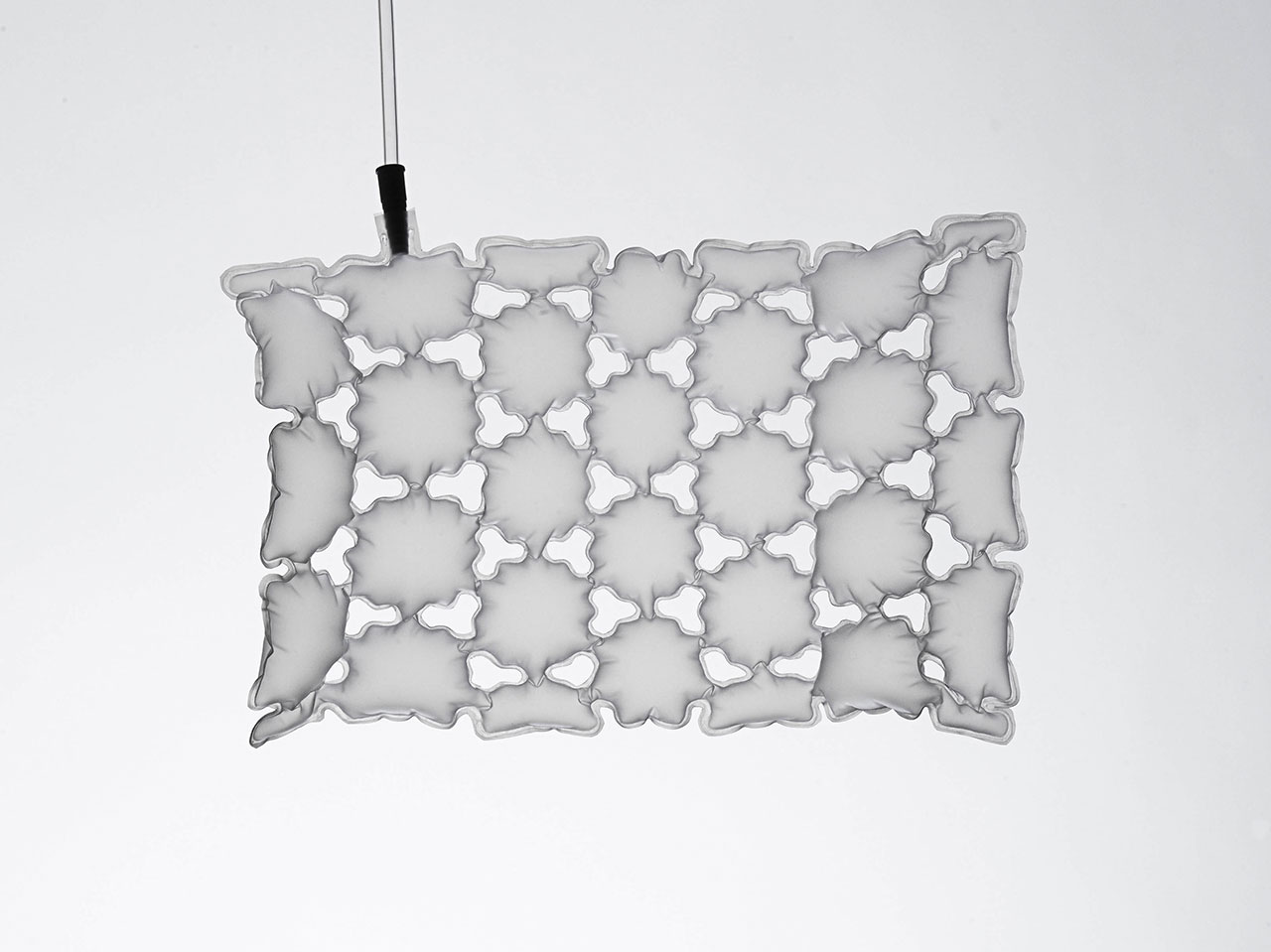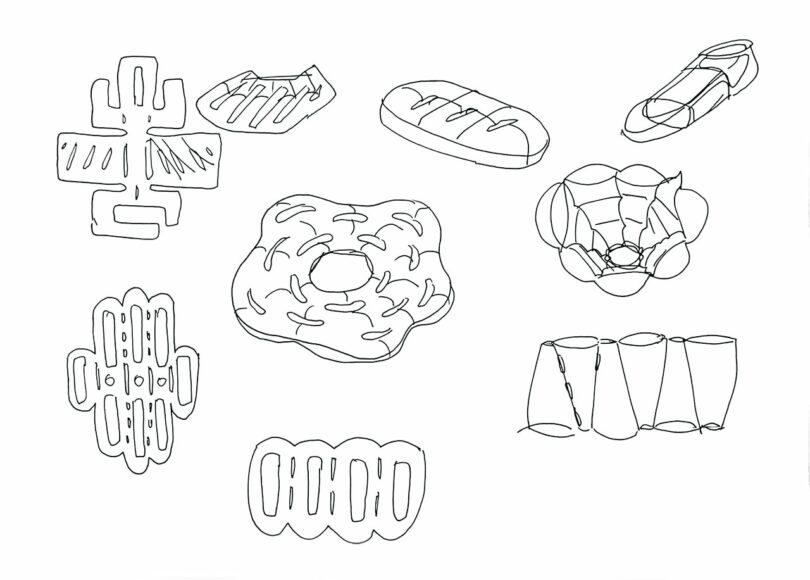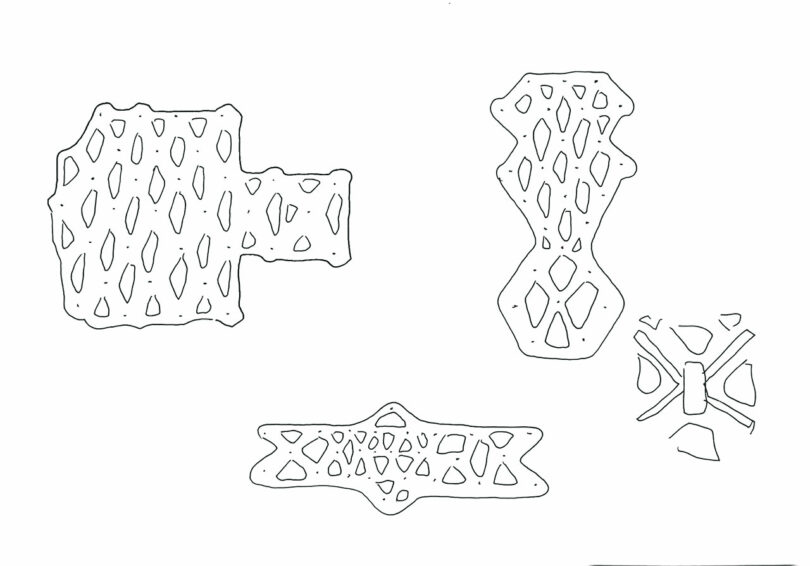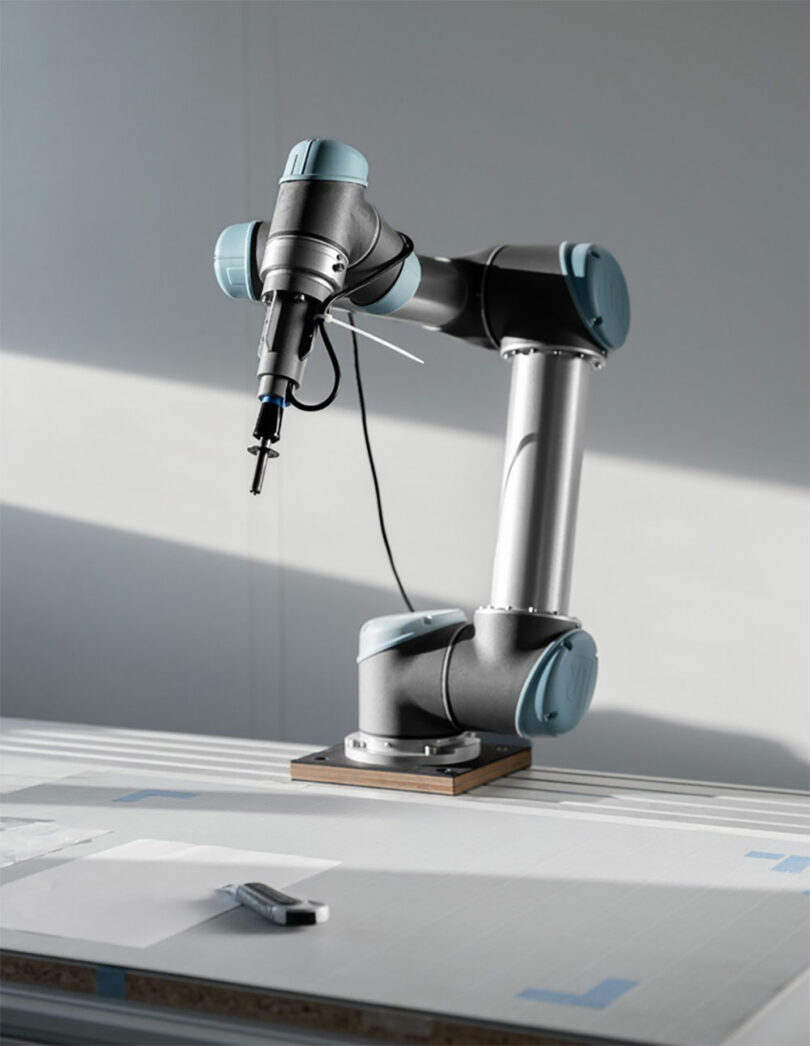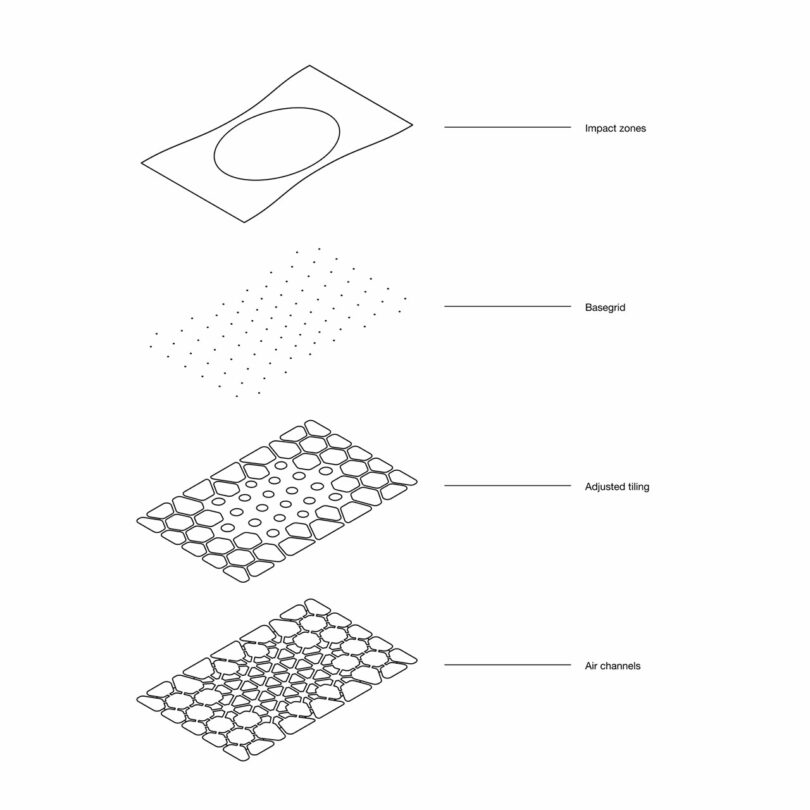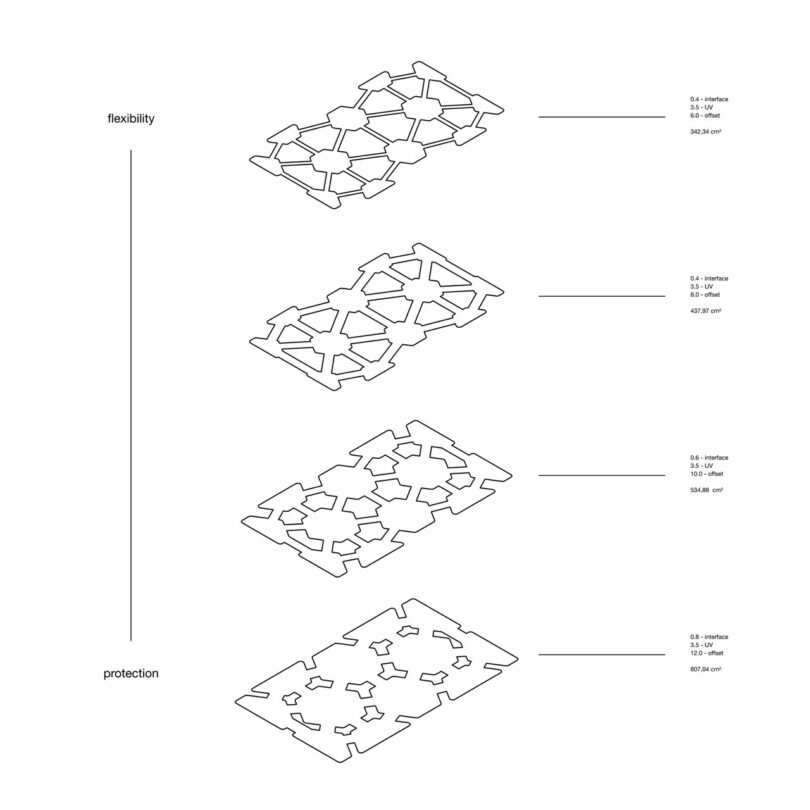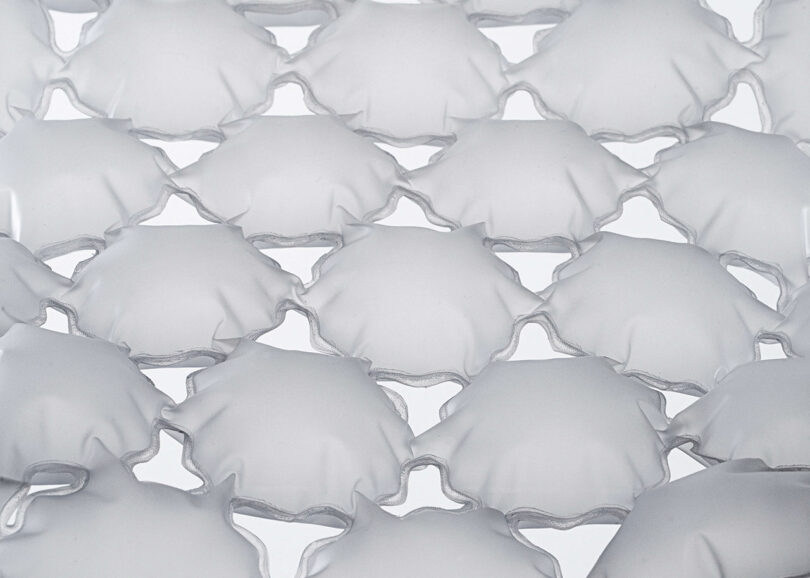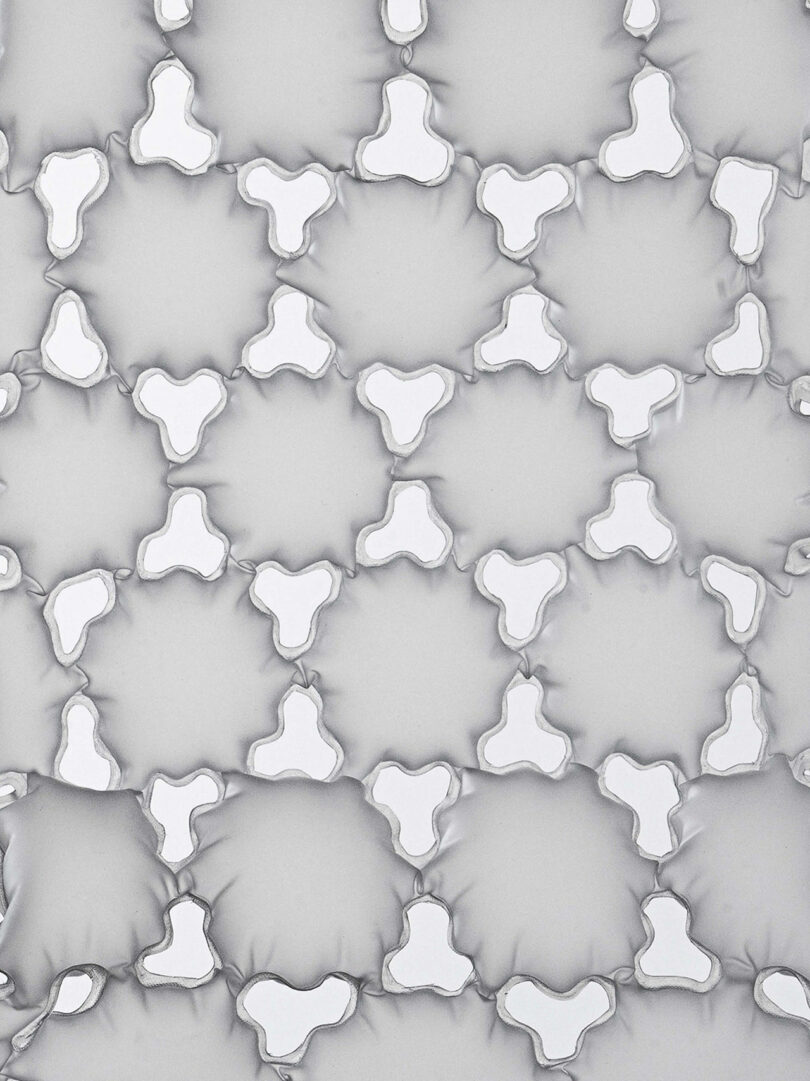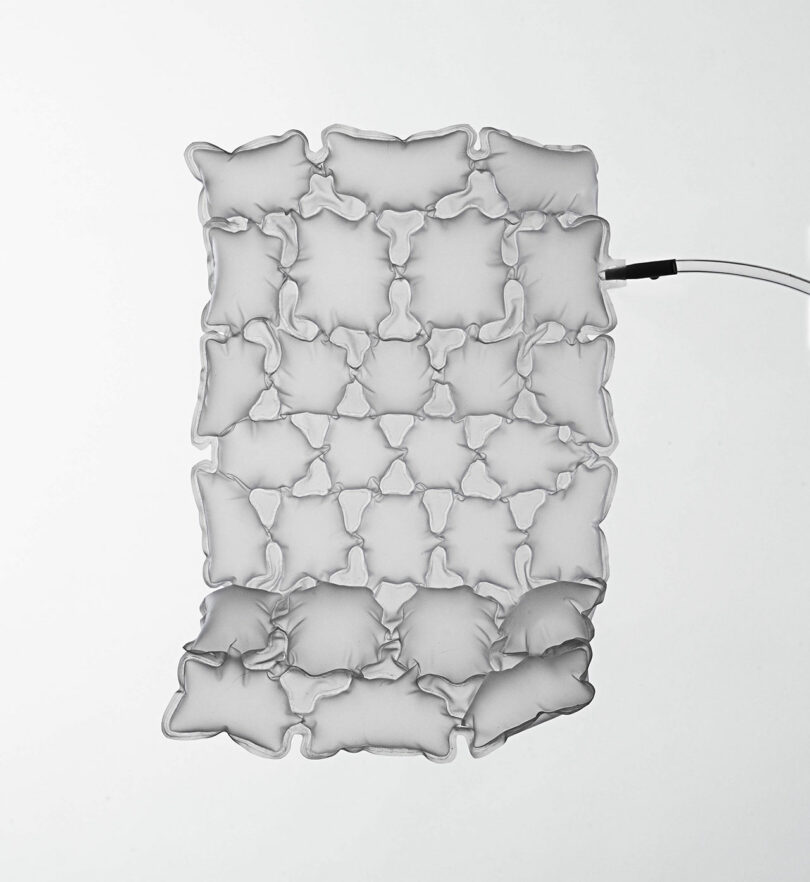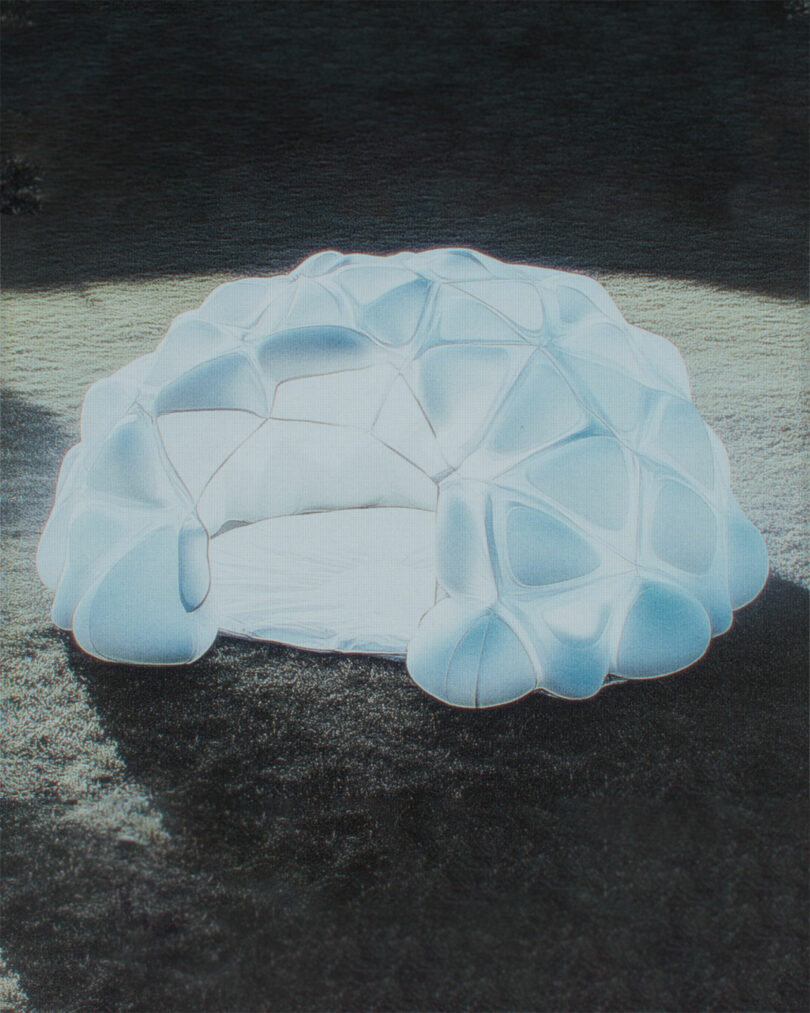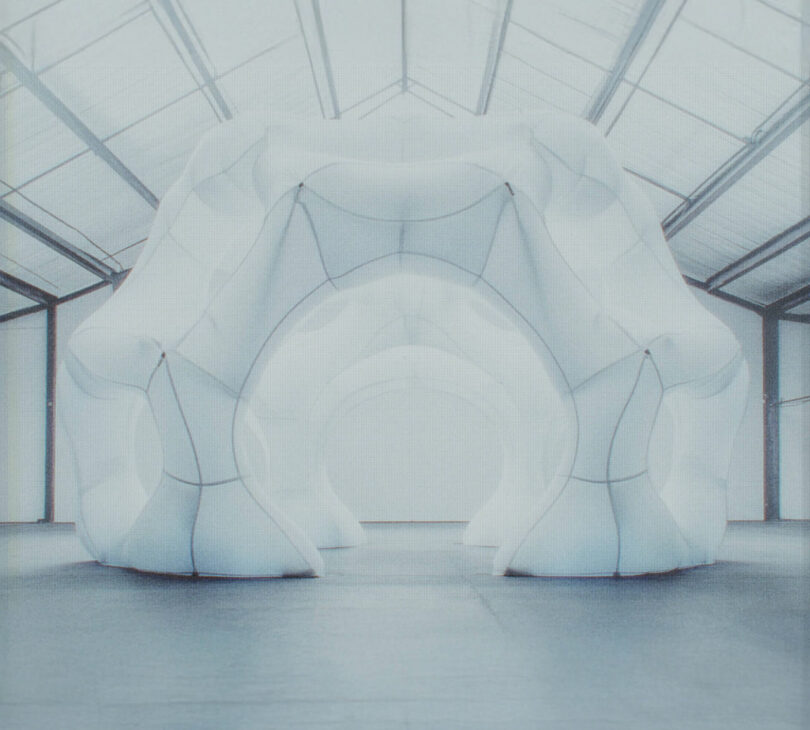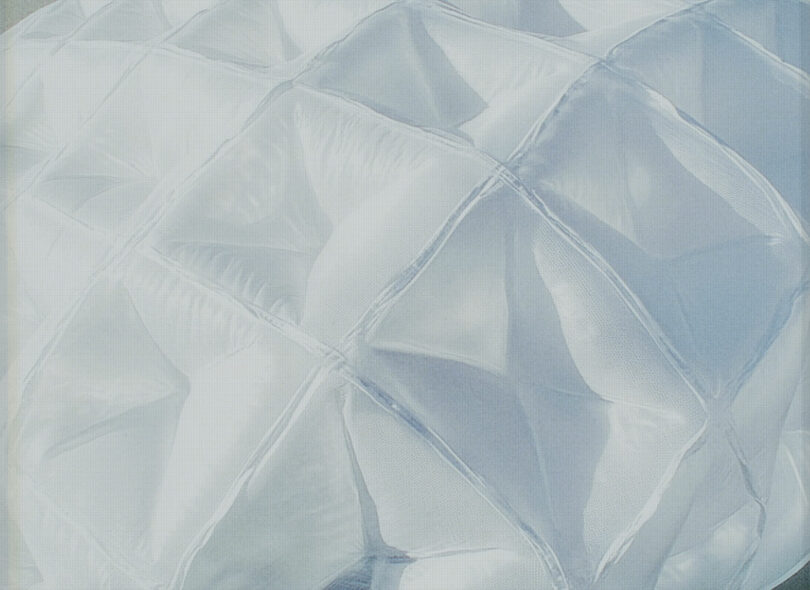Artists, architects, and designers have long experimented with inflatable form as an ephemeral, sometimes permanent, structural component. Until now, few have tested out its application as versatile packaging.
Known for its ability to bridge design and narrative, tech-forward creative studio Tomorrow Bureau teamed up with research-led entity WINT Design Lab to develop Project ARA, a probe into air and biomimicking pattern as a responsive design material, primarily for the protective wrapping of various items.
WATCH:
The intensive project centered on investigating the resiliency of biological defense mechanics – the innately geometric molecular compositions that make up natural matter and carry a high degree of dynamism.
Design begins with observation. Microscopic textures and cellular geometries serve as the foundation for inquiry. Giving reverence to evolution’s efficiency, we see that what may appear fragile conceals an intelligent structure.
The result: a series of intricately tile-like patterns that form into pneumatic membranes, produced using elastic polymer. Presented through the freshly launched PROTOÉDITIONS platform, the prototypes have potential on a broad scale: from insulating smaller objects to fully encapsulating an architectural enclosure.
Sketch by WINT Design Lab
Sketch by WINT Design Lab
“Inspired by nature’s microstructures, this project journeys from the microscopic to the monumental” says James Earls, Tomorrow Bureau co-founder and creative director. “Structured into three chapters, the narrative explores a design methodology grounded in research, experimentation, and applied imagination.”
These inflatable textiles are agile and far less prescriptive than more conventional packing materials. Depending on their size, they can be used and reused for a wide range of applications. Of course, certain patterns – those that are more pared back versus those with more definition – are more conducive to protecting certain types of items. There’s also a level of engineered modularity that can accommodate awkwardly shaped objects such as a bike frame. They’re both durable and lightweight.
While some of the prototypes form as through-sheets, others are more mesh-like with cutaways emerging between interconnected cells. Both variations are precision produced using a carefully calibrated CNC-router, meticulously adhesing two films at specifically plotted points. The distilled designs were refined using the latest computer-aided modeling software.
For both practices, the endeavor isn’t purely about innovative solution-finding but also a desire to imbue an oft-overlooked facet of our everyday world with more emotional responsivity. The core of that quest: tapping into the inherently transcendent and humanist qualities derived from nature. Moving from two to three dimensional form in a matter of minutes, the soft and amorphous nature of these new materials reflect a level of corporeal resonance.
“Pneumatic and revolution agree well,” the late architectural historian Marc Dessauce once said. “Both are fueled by wind and myth of transcendence; as the balloon enraptures the child, they animate and transport us on the promise of an imminent passage into a perfect future.”
For more information on Project ARA by Tomorrow Bureau and WINT Design Lab, head here.
Imagery and videos courtesy of Tomorrow Bureau and WINT Design Lab.

Adrian Madlener is a Brussels-born, New York-based writer specializing in collectible and sustainable design. With a particular focus on topics that exemplify the best in craft-led experimentation, he’s committed to supporting talents that push the envelope in various disciplines.

